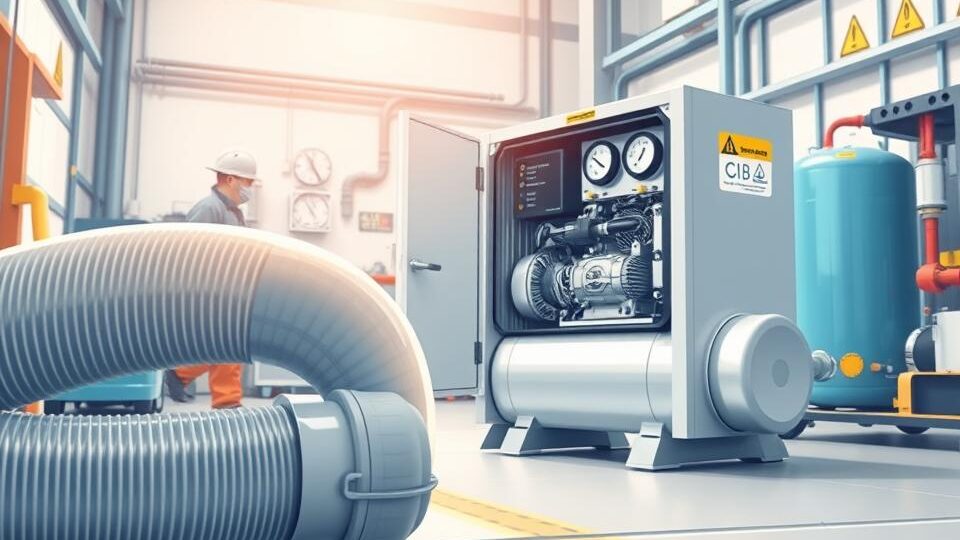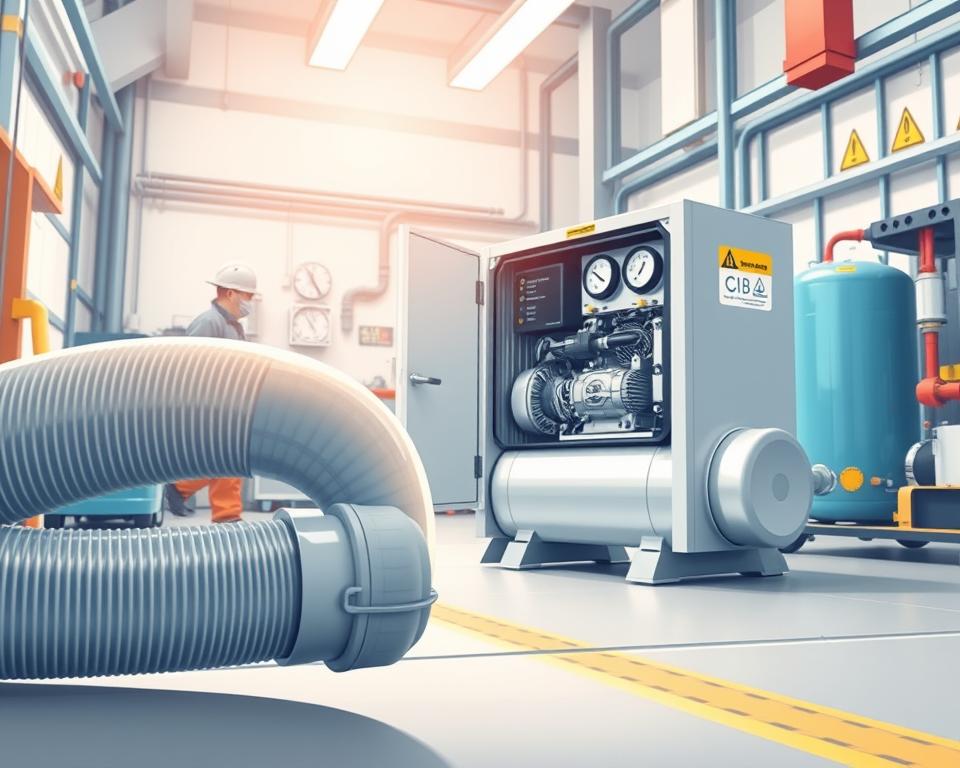
Blue PVC Air Compressor Hose Benefits for DIY Enthusiasts
PVC Pipe for Air Compressor Lines: Your Complete Guide
Did you know that a ruptured compressed air system can release energy equivalent to a stick of dynamite? Despite the hazards, numerous workshops continue installing piping systems from unsafe materials. Here’s why you must prioritize safety over cost when selecting PVC air hose.
Despite growing interest in certain materials, OSHA strictly prohibits their use in above-ground applications. Oil contact and repeated temperature swings degrade these pipes, risking sudden ruptures. Safe-rated pressures can still result in deadly bursts.
Installation Parts Supply provides safer options such as aluminum piping. Using approved materials saves you from fines and enhances safety. Here’s how to assemble a risk-free system.

Core Messages
- Explosion danger leads OSHA to outlaw some pipe materials.
- Pressure ratings drop as temperatures fluctuate.
- Material becomes brittle with age, upping rupture chances.
- Aluminum lines deliver a far safer option.
- Invest wisely to dodge fines and protect staff.
Why PVC Pipe Is Dangerous for Compressed Air Systems
All major brands advise against certain plastics in compressed air. Unlike water, compressed air stores explosive energy—a ruptured line can release force comparable to dynamite. Material selection is the linchpin of air-system safety.
- Brittleness: Sub-freezing temperatures turn materials brittle, increasing fracture risks.
- Adhesive failures: Temperature changes and oils cause adhesive joints to fail.
- Misleading ratings: Pressure capacity drops 50% at 110°F—most workshops exceed this.
After a PVC burst hurt staff, OSHA levied a $110,000 fine. Compression heating lowers allowable pressure even more—often ignored.
“Above-ground use of certain plastics for compressed air violates OSHA standards due to explosion risks.”
Metal alternatives fail more predictably, bending rather than fragmenting. Fragments from PVC blasts can hurl past 50 feet, embedding dangerously.
Workshops face daily temperature fluctuations that accelerate material degradation. UV light and solvents over time sap pipe strength, triggering dangerous failures.
Recommended Piping Materials for Compressed Air
Aluminum air lines deliver superior safety and leak reduction. They leak 90% less than black iron, making them ideal for today’s shops. Their lightweight design and corrosion resistance make them ideal for long-term use.
Snap-together modular aluminum cuts installation hours. Installation Parts Supply offers pre-assembled sections that snap together. One auto factory trimmed labor hours by 40% via aluminum retrofits.
- Copper: Ideal in sterile environments for its germ-killing copper surface. Requires soldering expertise.
- Stainless Steel: In seaside shops, stainless steel won’t corrode.
- ABS/HDPE: Chemical-resistant for labs and factories handling solvents.
“Our aluminum retrofit reduced energy waste by 15%—paying for itself in 18 months.”
Torque matters. Too tight splits fittings; too loose lets air escape. Stick to recommended 25–30 ft-lb torque for aluminum.
NSF-approved lines keep food-grade air clean. Choose pipe rated for your specific operating environment.
How to Choose the Right Piping Material for Your Needs
Balance budget, safety, and performance when choosing pipe. One plant slashed $12k per year by adopting aluminum lines. Here’s how to make the right choice.
| Material | Cost (per ft) | Maintenance | ROI Time |
|---|---|---|---|
| Aluminum | $8.50 | Low | 18 months |
| Black Pipe | $5.00 | High | N/A |
| Copper | $10.20 | Medium | 24 months |
Watch your operating temperatures. From arctic chills to high heat, aluminum outperforms. For chemical-heavy environments, stainless steel resists solvents.
Pro Tip: Compute ROI based on compressed-air leakage. Don’t let 10% leakage cost you $3,500 a year.
- Ensure your pipe PSI rating exceeds system pressure.
- Keep records of inspections and tests to satisfy OSHA.
- Get a complimentary piping audit from Installation Parts Supply.
“Our aluminum retrofit cut energy waste by 15%—paying for itself in 18 months.”
Hire pros for big installs to guarantee airtight connections. Check warranties—some pipes include decade-long coverage.
Bringing It All Together
Choosing the right materials for your compressed air setup isn’t just about cost—it’s about safety. Older systems account for 92% of accidents due to degraded piping. Aluminum offers 99.8% reliability, making it a smart long-term choice.
Remember:
- Say no to plastics that can explode.
- Opt for corrosion-resistant metals like aluminum or stainless steel.
- Non-compliant systems risk OSHA fines and insurance issues.
Ready to upgrade? Get instant quotes and special offers from Installation Parts Supply. Access a complimentary maintenance template or request urgent replacements.
Make safety your piping priority—act today.